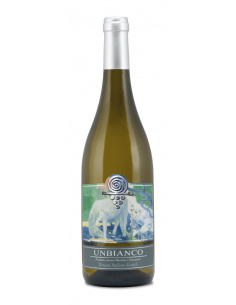The current production area of the Controlled Designation of Origin is limited to a small area of just 37 km² around the municipality of Serrapetrona.
At 500 meters above sea level , in the province of Macerata, about 30 km from the Adriatic coast and at the foot of the Sibillini Mountains , the hills surrounding Serrapetrona, exposed to the South-East, where the constant sea breeze blows, which often gives way to stronger winds, have been smoothed over time, to form the steep and rugged slopes on which the Vernaccia Nera vineyards are planted. The vines fight gravity by sinking their roots into the cream-colored, marly-calcareous soils composed of fine white clay, enriched by a stony skeleton, which bring pleasant minerality and flavor, together with the temperature variations between day and night, which fix the aromas and acidity that we find in the wines.
The vineyard of the Terre di Serrapetrona - Tenuta Stefano Graidi winery is made up of seven small plots of land owned by the winery, for a total of approximately 20 hectares, of which 80% is dedicated to the cultivation of Vernaccia Nera, alongside smaller productions of Pecorino, Sauvignon Blanc and Sangiovese.
Just as it happened in the past, the cultivation of vines is still limited to the natural conformation of the territory. The vineyards are in fact surrounded by woods, olive groves, meadows and streams, which do not allow intensive agriculture, keeping the space to be used for vineyards small and guaranteeing the protection of biodiversity .
Since its acquisition, the winery has been committed to applying innovative methods and techniques that allow it to bring benefits to the soil and the fruits produced, such as maintaining a lawn, useful for counteracting both soil erosion, caused by the significant steepness of the slopes and aggravated by increasingly frequent torrential rains, and the evaporation of rainwater, essential for the resistance of the vine, stressed by ever-increasing temperatures and lengthening periods of drought.
In order to preserve the vineyards and the biological richness of the area, the production of grapes follows the organic farming regime , which includes precision treatments without the use of chemicals, which can be implemented through advanced geolocalization systems, which allow constant monitoring of the health of the vine and timely intervention when necessary. Furthermore, the weather forecasting tools installed in the fields allow us to anticipate weather conditions and plan agricultural activities in order to prevent problems and optimize the work phases. This approach, in addition to determining a significant reduction in treatments, has also made real and effective sustainable agricultural production possible.

